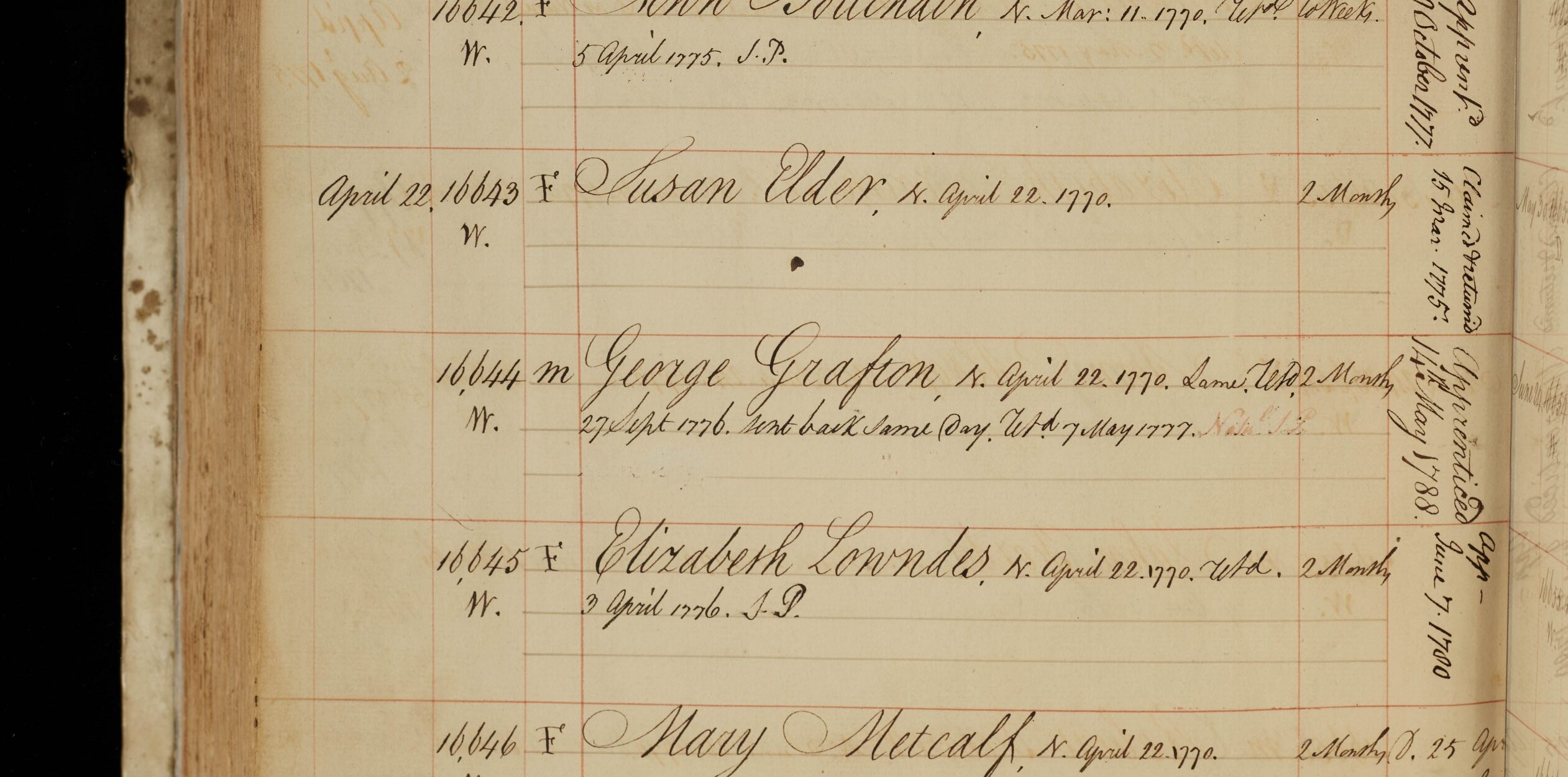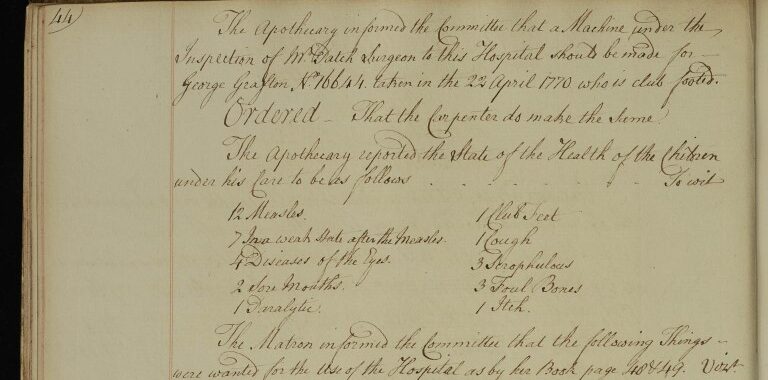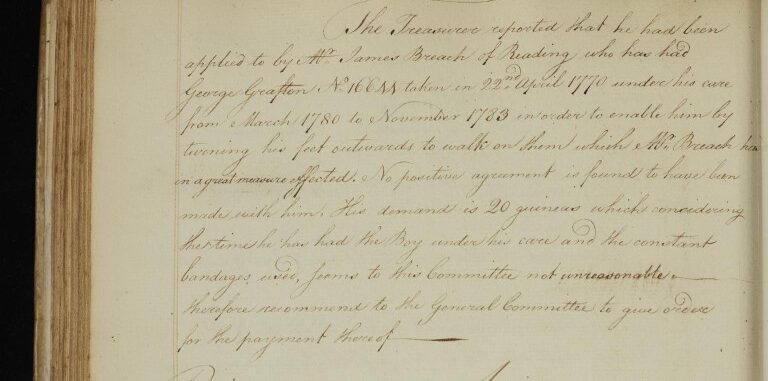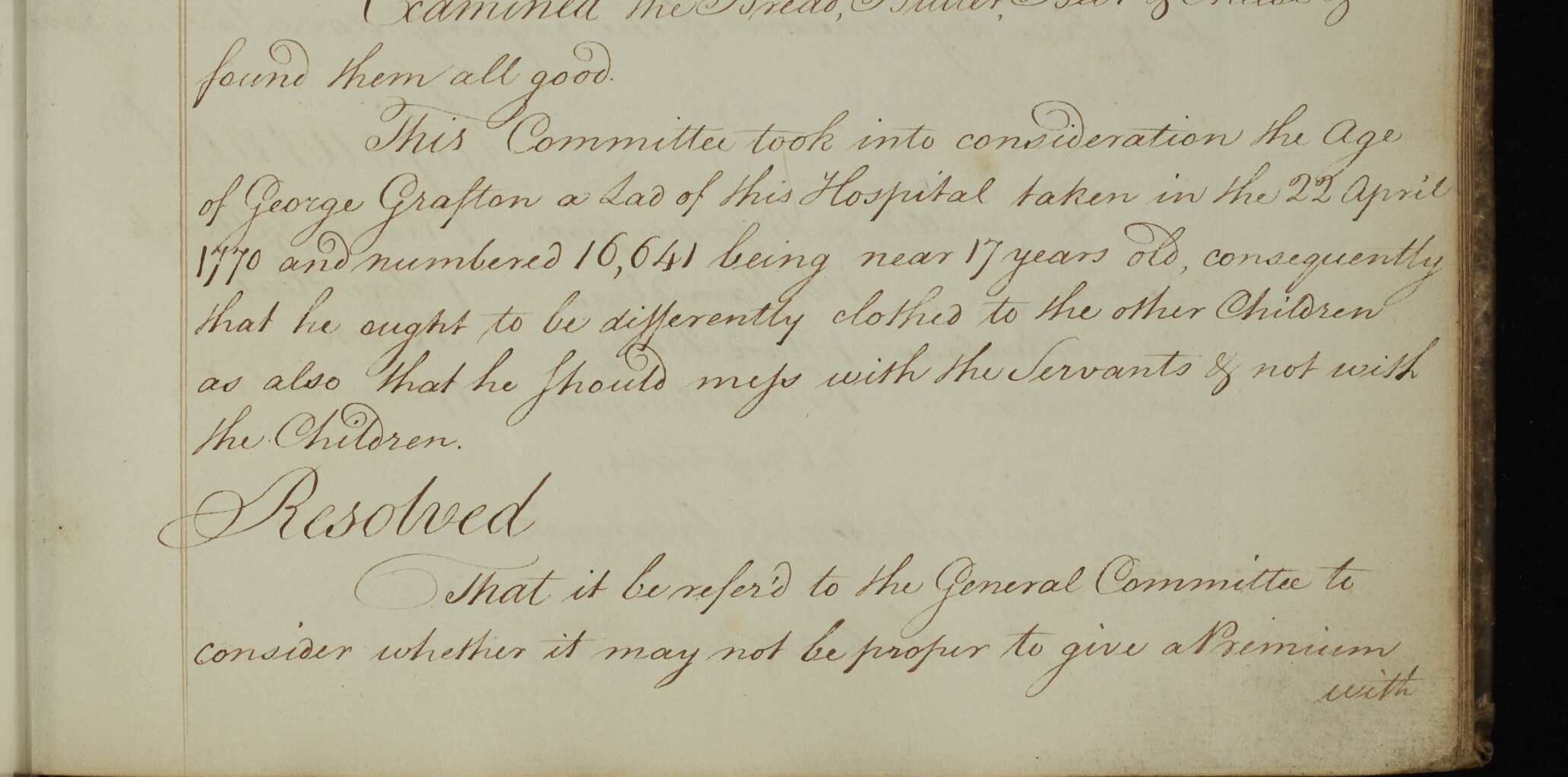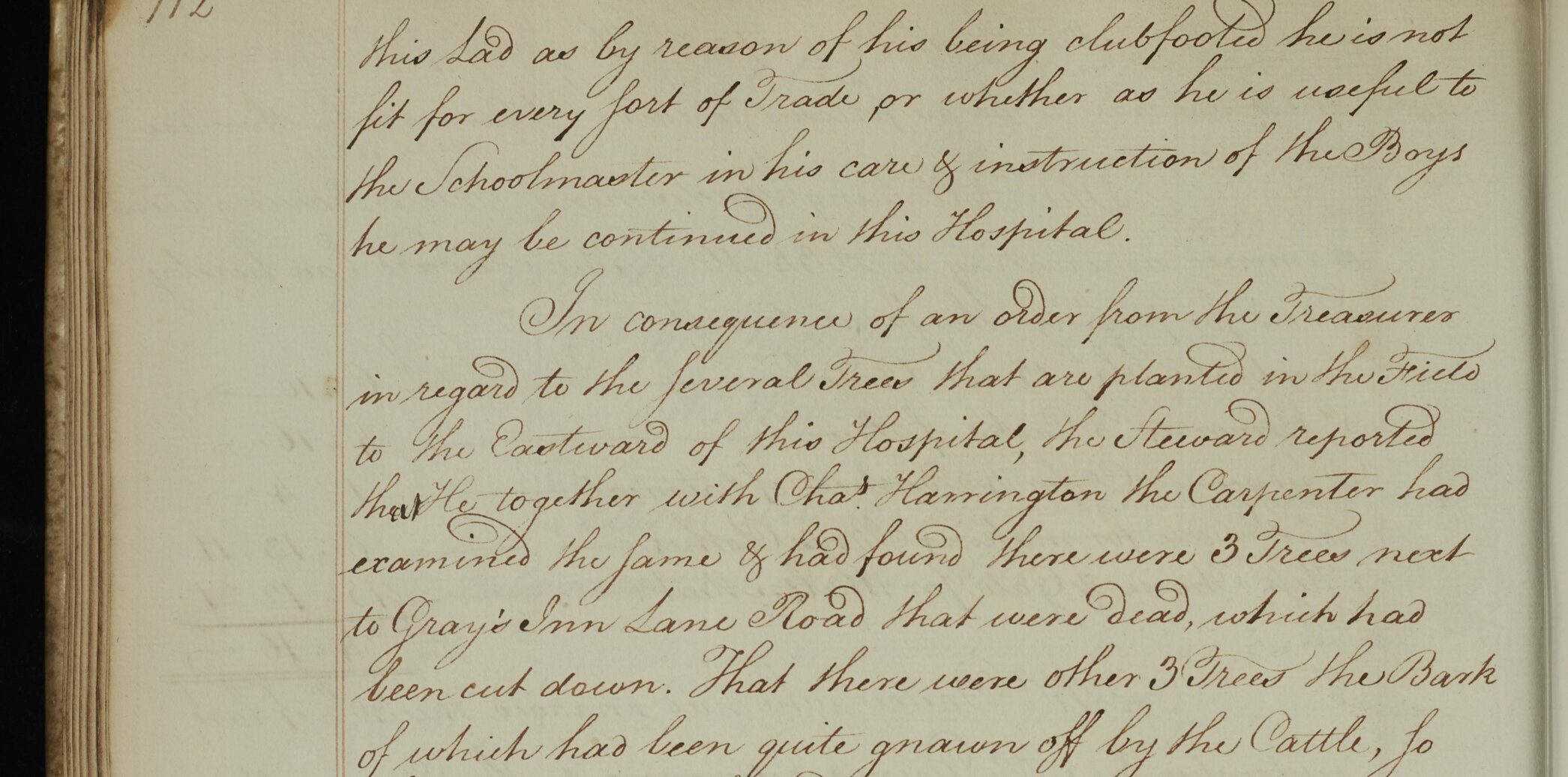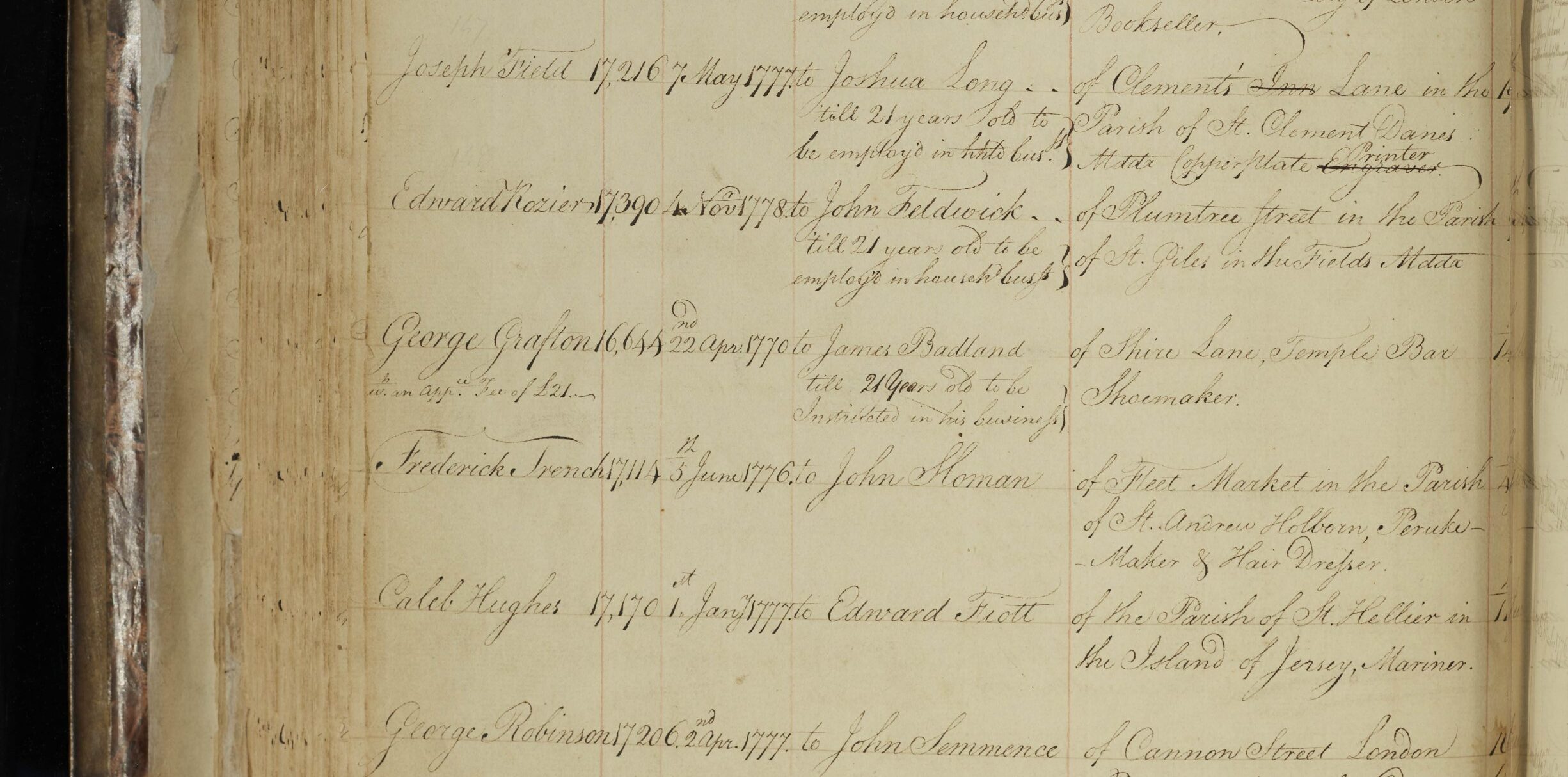This blog is part of our #RealStoriesOfCare series. It tells the story of Eleanor and George who were pupils at the Foundling Hospital, England’s first dedicated children’s charity, in the 18th century.
The original plan for the Foundling Hospital children was that the boys should be apprenticed as manual labourers at sea or on land, and the girls in domestic service. Increasingly the boys found themselves working for London tradesmen as cheesemongers, bookbinders, tailors, wig makers, or manufacturing the type of luxury goods the foundling pupils might only dream of.
For the most part, girls were employed as general servants, but some were trained as milliners and dressmakers. From 1766, a significant number of girls from the Hospital were employed as embroiderers. Many specialised in tambour, an embroidery technique which became particularly fashionable in the second half of the 18th-Century. It involved stitches made with a hook rather than a needle, which was a speedier process to keep up with increasing demand.
By the late 18th-Century, London was a place of opportunity for many small businesses. However, dependence on the whims of fashion meant business success could quickly be followed by financial disaster. Foundling pupils often returned to the Hospital in times of trouble and if they could, the Governors would support them into adulthood.
Eleanor’s apprenticeship and a return to the Hospital
Eleanor Weathers, born in 1759, was admitted to the Hospital and given the number 13621. In 1778, she was apprenticed to John Constable, a tambour worker of Worship Court, Moorfields. But a year later, Eleanor had returned to the Hospital after her master and mistress abandoned her and pawned her clothes. The Hospital Governors agreed that Eleanor could remain at the Hospital until she found further employment as an embroiderer.
By 1783 she was recorded as living at the Hospital again. Eleanor became employed by the Hospital assisting the knitting mistress, Margaret Crossley; employment she continued with until 1792. At this point, a reference in the wages book recorded a change to her surname – she had now become Eleanor Grafton and left the care of the Hospital once again.
On 17 April 1792, the marriage records for St Pancras Chapel, London, record the marriage of an Eleanor Weathers to a George Grafton. Eleanor would have been 33 years old. One of the witnesses was John Crossley, probably the husband of Margaret Crossley, the knitting mistress. George Grafton was the name of another foundling pupil, and this is who we think Eleanor married.
George’s story
George had been admitted to the Hospital in 1770, so he was 11 years younger than Eleanor. He had been born with deformities so severe that his feet were turned inwards, which gave him difficulty walking. In 1778, the Hospital’s carpenter was asked if it was possible to make a ‘machine’ to help George. The option of surgery was under discussion. George underwent this surgery in 1780 at the age of 10. Considering this was a time long before anaesthetic, the procedure must have been exceedingly traumatic. Added to this, the surgery was a failure.
George began working as the assistant of the schoolmaster of the Hospital and then in 1788 at the age of 18, the Governors found George work with a shoemaker. Unusually, his master was offered an apprentice fee of £21 because of George’s disability. Fees were typically £5 or £10. They were only paid for a short period (between 1767 and 1771) because of the insistence of the Government, who funded unrestricted admissions between 1756 and 1760, to discharge the children they had supported financially as quickly as possible.
What is not recorded is whether Eleanor and George had formed an attachment before he was apprenticed. As members of staff, they most likely met in the servants’ dining hall.
A possible family
We cannot be certain, but we think Eleanor and George had two sons. There are records of a George Grafton, son of George and Eleanor baptised in 1794 at St George the Martyr, Queen Square. A Robert Henry Grafton, also the son of a George and Eleanor was baptised in 1801 at St Luke’s, Finsbury. There is also a burial for a George Grafton at St Andrew’s, Holborn in 1807 but with no age given it is impossible to know if this was father or son.
We do know however that the Graftons retained their links with the Hospital as George went into business and supplied shoes for the Foundling Hospital children from 1794.
Find out more about Eleanor and George and see Eleanor’s archival records here.
George’s archival records
Copyright © Coram. Coram licenses the text of this article under Creative Commons Attribution-NonCommercial 4.0 (CC BY-NC).


